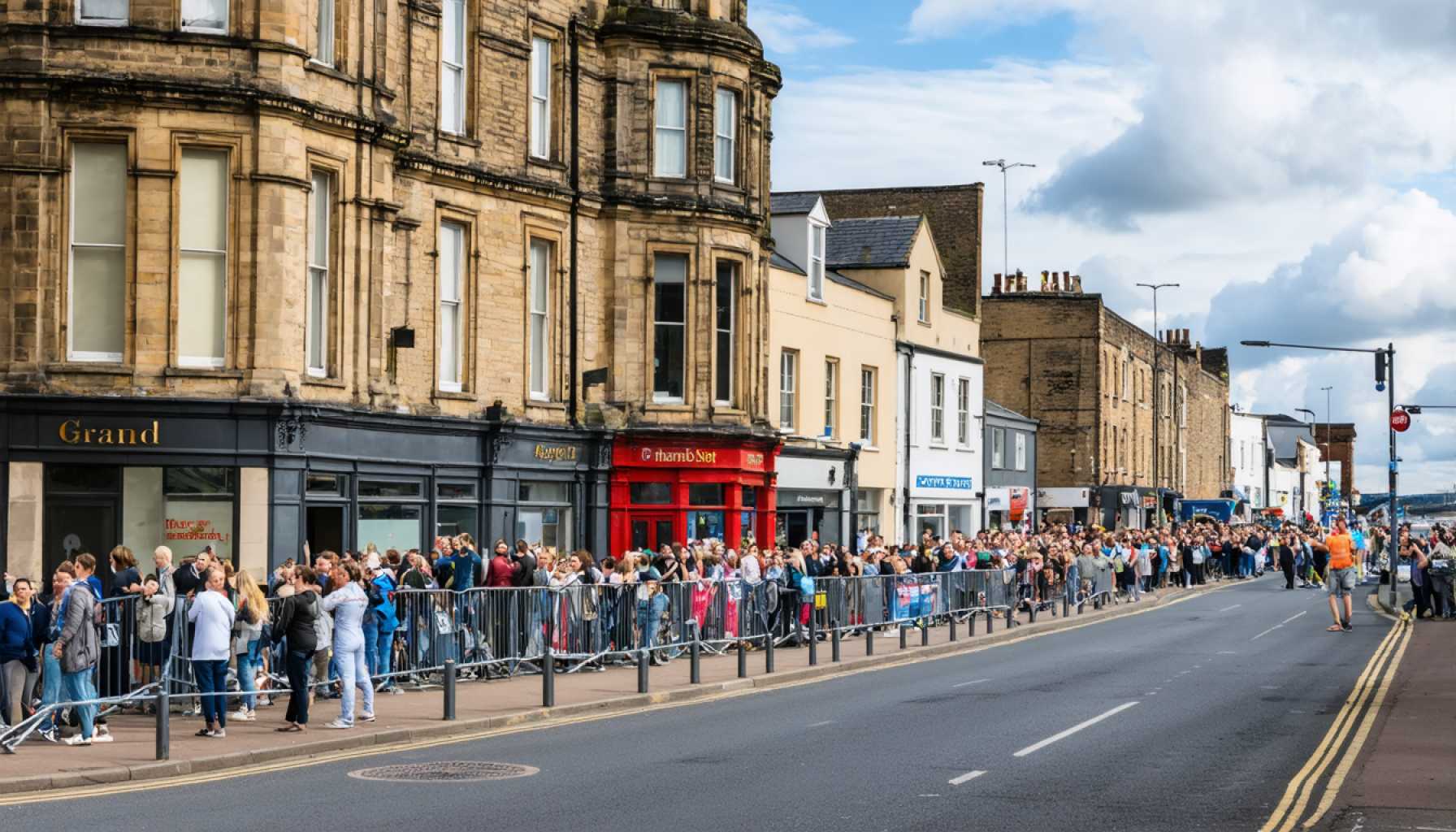- Ferry Street is undergoing a major transformation to connect neighborhoods with Oval Beach and Mt. Baldhead parks.
- A hazardous sinkhole at the Warnock Drain crossing was identified, prompting essential infrastructure upgrades.
- In April, a key milestone was reached with the replacement of a corroded culvert, despite temporary water service disruptions.
- A boil advisory is in effect as the Kalamazoo Lake Sewer and Water Authority ensures water safety.
- Ongoing construction includes sheeting removal, water main decommissioning, and groundwork preparation.
- Completion will bring new pavement, markings, and guardrails, enhancing street safety and aesthetics.
- This project highlights community spirit and dedication to creating safer, stronger infrastructure.
Ferry Street, a vital artery connecting bustling neighborhoods to the serene charms of Oval Beach and the iconic Mt. Baldhead parks, is receiving a dramatic transformation. The heart of this metamorphosis lies in the rectification of a hidden menace—a sinkhole stealthily forming at the Warnock Drain crossing, discovered late last summer. With dedicated conviction, the city of Douglas embarked on this venture, determined to revitalize the aging infrastructure.
Last August marked the temporary closure of Ferry Street as crews assessed the situation. It wasn’t merely a repair job. It was a puzzle of engineering ingenuity. By February, workers were knee-deep in efforts, replacing the corroded culvert that threatened to upend daily life. City Manager Lisa Nocerini recently revealed that on April 3, a significant milestone was reached: the old, dilapidated culvert was successfully replaced, though not without some inconvenience. The necessary switch-off of water services briefly disrupted routines, but resilience prevailed, and the rhythm of life resumed.
Ensuring water safety, a boil advisory covers the area while meticulous tests are conducted by the Kalamazoo Lake Sewer and Water Authority. If all aligns favorably, the community can expect an all-clear imminently.
With construction entering its critical phases, activities buzz scene: sheeting removal, old water main decommissioning, and vital groundwork such as sand subbase and gravel preparation. A sense of anticipation builds as efforts turn towards stabilizing and beautifying the vicinity’s roadside slopes.
Over the coming weeks, Douglas residents can look forward to the crescendo of progress crescendoing to completion. This will manifest in fresh layers of pavement, sleekly painted markings, and formidable guardrails, all set to enhance safety and aesthetics. A cloak of patience envelops the community as they await this infrastructure marvel to unfold.
The transformation of Ferry Street is not just a tale of construction, but a story of community spirit, tenacity, and forward-thinking. It stands as a reminder of how our shared investments lay the foundation for stronger, safer communities. As the dust settles and the barriers lift, Ferry Street will emerge renewed, a beacon of connectivity restored.
Ferry Street’s Revitalization: What This Means for the Community and Future Infrastructure Projects
Ferry Street Revitalization: A Comprehensive Overview
The transformation of Ferry Street in Douglas is a landmark project that underscores the importance of proactive infrastructure management to avert potential hazards such as sinkholes. This ambitious undertaking not only addresses immediate concerns but also sets a precedent for how cities can approach infrastructure updates with an eye toward sustainability and community well-being.
1. Infrastructure Challenges and Solutions
– Sinkhole Risk Management: Sinkholes can cause significant structural damage and pose safety risks. The Ferry Street project highlights the crucial need for regular inspections and up-to-date infrastructure records to identify weak points before they deteriorate into more substantial issues (U.S. Geological Survey).
– Engineering Innovations: The engineering involved in replacing the corroded culvert required significant ingenuity. Such projects often incorporate state-of-the-art materials and methods to enhance longevity and resilience against environmental factors (National Association of County Engineers).
2. Construction Phases and Techniques
– Sheeting Removal and Water Main Decommissioning: These are critical phases that involve careful coordination to prevent service disruptions while ensuring the integrity of water and sewer systems.
– Roadside Slope Beautification: Creating aesthetically pleasing roadside areas not only improves the visual appeal but can also contribute to erosion control and habitat creation for local flora and fauna.
3. Community Impact and Benefits
– Safety Enhancements: The addition of new guardrails and well-marked pavements is expected to reduce traffic accidents and enhance pedestrian safety (National Highway Traffic Safety Administration).
– Economic Uplift: Improved roads can boost local economies by facilitating easier access to businesses and reducing vehicle wear and tear, leading to cost savings for residents.
4. Environmental Considerations
– Sustainable Practices: The use of environmentally-friendly materials and construction techniques can minimize the ecological impact, ensuring the project aligns with broader sustainability goals (Environmental Protection Agency).
5. Future Development and Recommendations
– Regular Maintenance Protocols: Setting up a regular maintenance schedule will help prolong the life of the new infrastructure and avoid future large-scale overhauls.
– Community Engagement: Continued communication with residents regarding project updates and expected disruptions can foster community trust and support.
6. Pressing Questions and Answers
– What is a boil advisory? A boil advisory is a precautionary measure that suggests residents boil tap water before consumption to eliminate potential contaminants (Centers for Disease Control and Prevention).
– When will the project conclude? The project is expected to reach completion with the unveiling of new pavement and infrastructure enhancements within the coming weeks.
Conclusion and Actionable Tips
– Residents should remain informed about construction progress through city announcements and engage with local officials to express any concerns or feedback.
– Those residing or traveling in the area should plan for potential delays and adhere to any traffic warnings or detours.
As Douglas gears up for the completion of this transformative project, let Ferry Street serve as a template for other communities facing similar infrastructure challenges. By investing in proactive measures now, we can ensure safer, more resilient neighborhoods for the future.
For more insights and stories on urban infrastructure, visit the City of Douglas’s official website.
